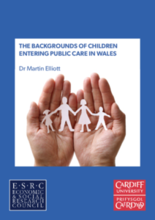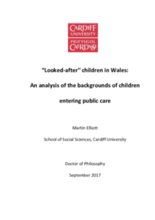Abstract
This study seeks to address a number of important questions with regard to children in public care, commonly referred to in the UK as ‘looked-after’ children. Firstly, the study aims to identify whether there are child or placement characteristics that explain the observable variations in rates of children ‘looked-after’ between local authority areas. Secondly, it seeks to investigate the impact of poverty and social inequality on the likelihood of children becoming ‘looked-after’. Using a social inequalities lens the study seeks to identify whether there is a ‘social gradient’ in the rates at which children enter public care. Finally, the research aims to identify factors that predict a child who has experienced a period of being ‘looked-after’ re-entering care. Using six years of administrative data on children ‘looked after’ in Wales the study was undertaken using quantitative analyses of secondary data relating to approximately 15,000 ‘looked-after’ children. The research was undertaken using descriptive statistics, linear regression and binary logistic regression. The study identifies a relationship between neighbourhood level deprivation and the likelihood of children becoming ‘looked-after’. There is clear evidence of a ‘social gradient’ in the numbers of children entering care, with a corresponding increase in rates of children ‘looked-after’ for each step increase in neighbourhood level deprivation. Whilst both age and predominant category of need of children entering care are statistically correlated to a local authority’s overall rate of children ‘looked-after’, there are a number of differences not related to overall rates, which suggest differences in local social work practice. Logistic regression analysis results show that the length of a child’s initial period in care (stays of <90 days) and their age group (11-15 years) were associated with an increased likelihood of returning to care. The implications for child welfare policy and practice are considered.


